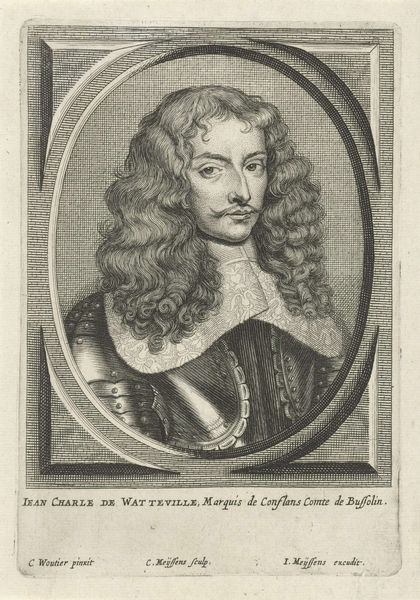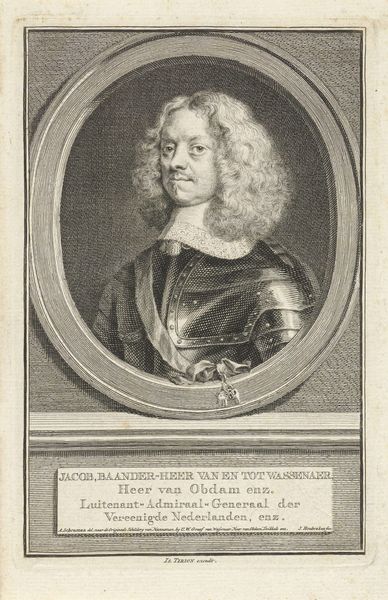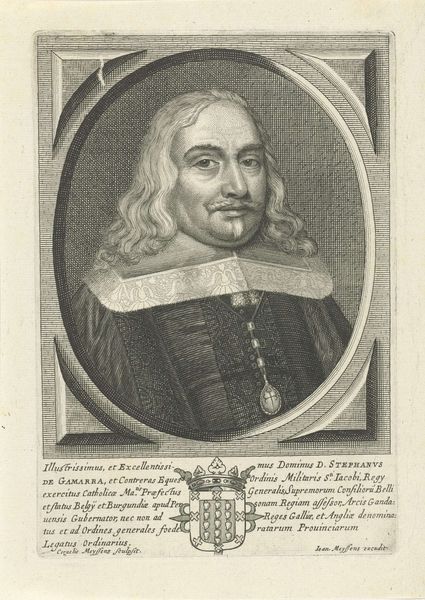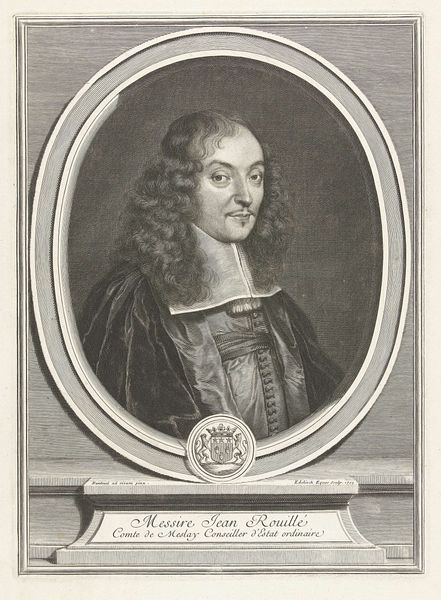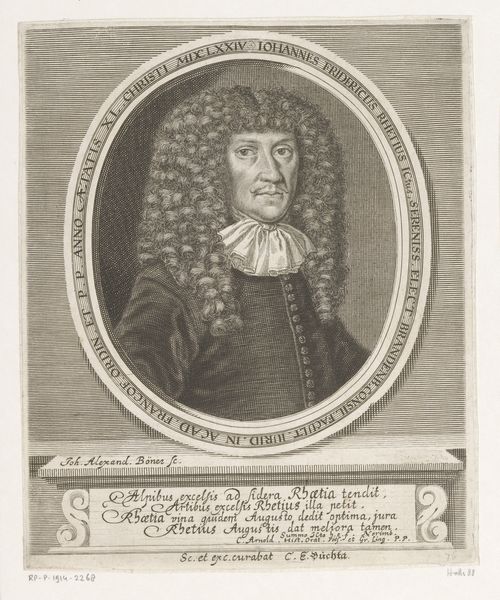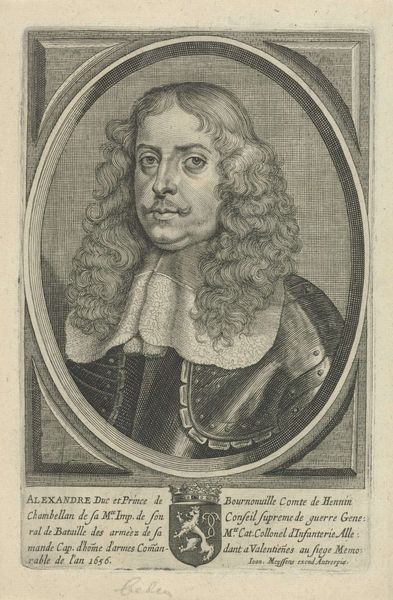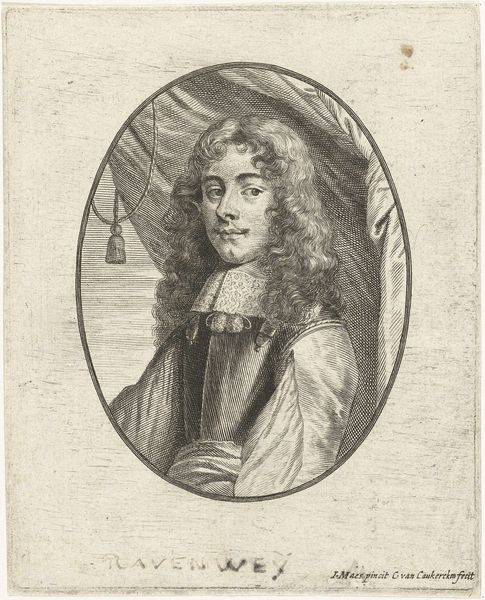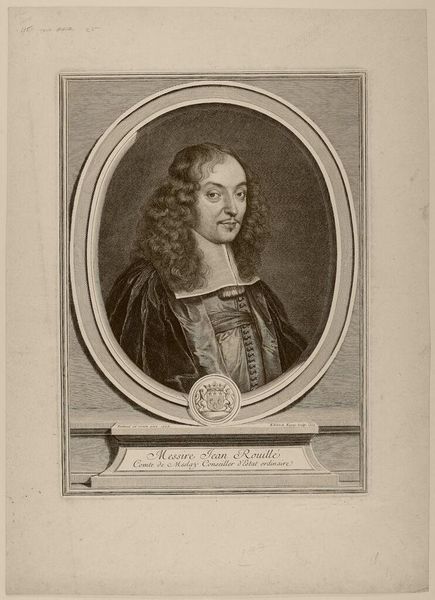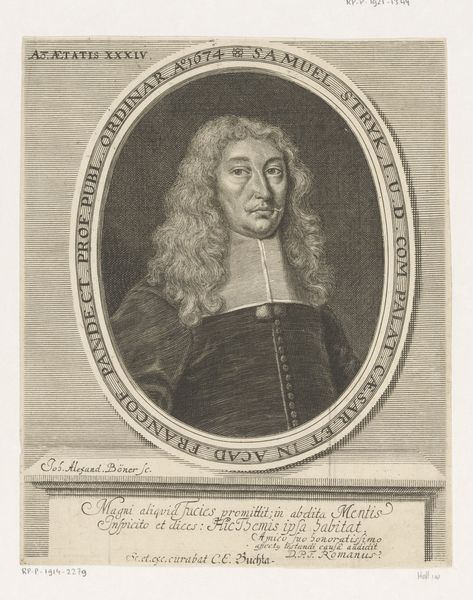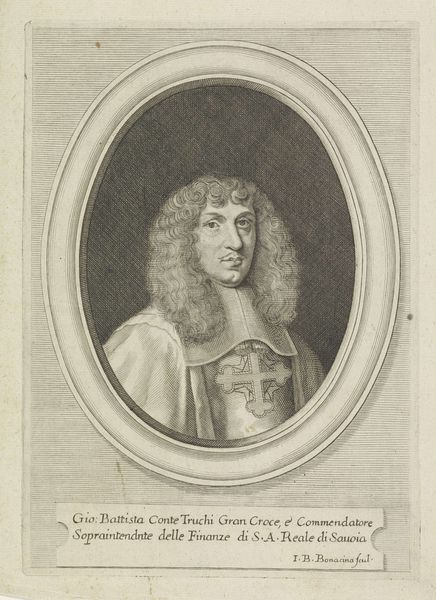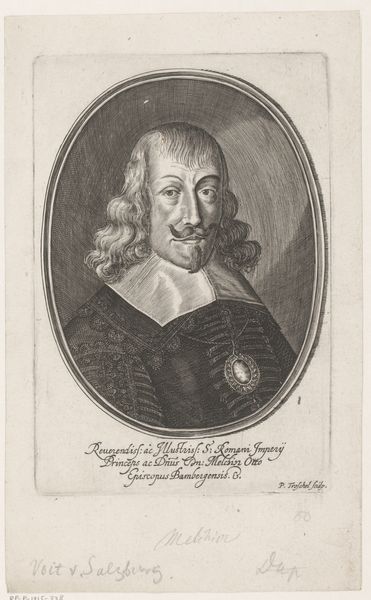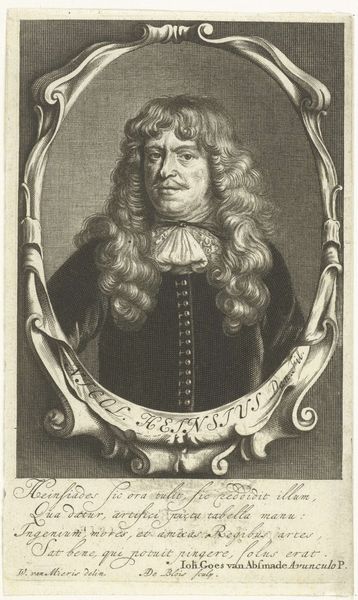
engraving
#
portrait
#
baroque
#
old engraving style
#
history-painting
#
engraving
Dimensions: height 174 mm, width 126 mm
Copyright: Rijks Museum: Open Domain
Curator: This is Cornelis Meyssens's "Portret van Gillion-Othon I de Trazegnies," dating from 1650 to 1670. An engraving on paper, now held at the Rijksmuseum. Editor: My immediate sense is of authority, perhaps even a degree of detachment. The subject's gaze seems both direct and somehow distant, framed so meticulously. It projects an image of established power. Curator: Indeed. Gillion-Othon I de Trazegnies was a prominent figure, as highlighted by the text below the portrait detailing his various titles: Marquis, Baron, Seneschal... all indicators of his socio-political standing. The artwork functions as a declaration of identity, a visual marker solidifying his place in the power structures of the time. Editor: Precisely. And consider the context. It’s Baroque era. The intricate detail of the engraving—the meticulously rendered hair, the armor—isn't merely decorative. It signals status, masculinity, and the role of lineage within that framework. How much of that, do you suppose, translates across centuries to viewers today? Curator: The level of detail, a hallmark of Baroque portraiture, served specific functions: establishing visual identity in an era before photography, cementing one's place in a hierarchical society. The armor, even in this symbolic representation, connected him to martial prowess and therefore influence. Editor: I wonder about that implied militarism. It is softened by his elaborate, flowing hair. So, does that combination convey power or the taming of it for political purposes? What narrative does this armor communicate within that time, in this place? Is it actively representing participation in current events or maintaining a public image? Curator: I see your point. And the formal conventions are undeniable here. While the military accoutrements evoke power, the portrait conforms to the standardized tropes of aristocratic depiction. Ultimately it must fit within prescribed molds, which reinforces, not rebels against, established norms of representation. Editor: I appreciate the dialogue that this artwork prompts about identity. What markers and signifiers are still actively present in contemporary discourse around gender and class? Looking back at it now, what feelings and questions does it evoke about today's socio-political landscape? Curator: Well said. It is a glimpse into the performance of power through visual representation, with lingering lessons and queries for our own era.
Comments
No comments
Be the first to comment and join the conversation on the ultimate creative platform.
